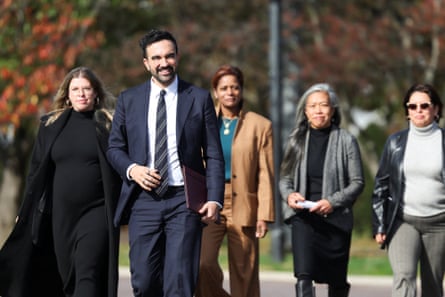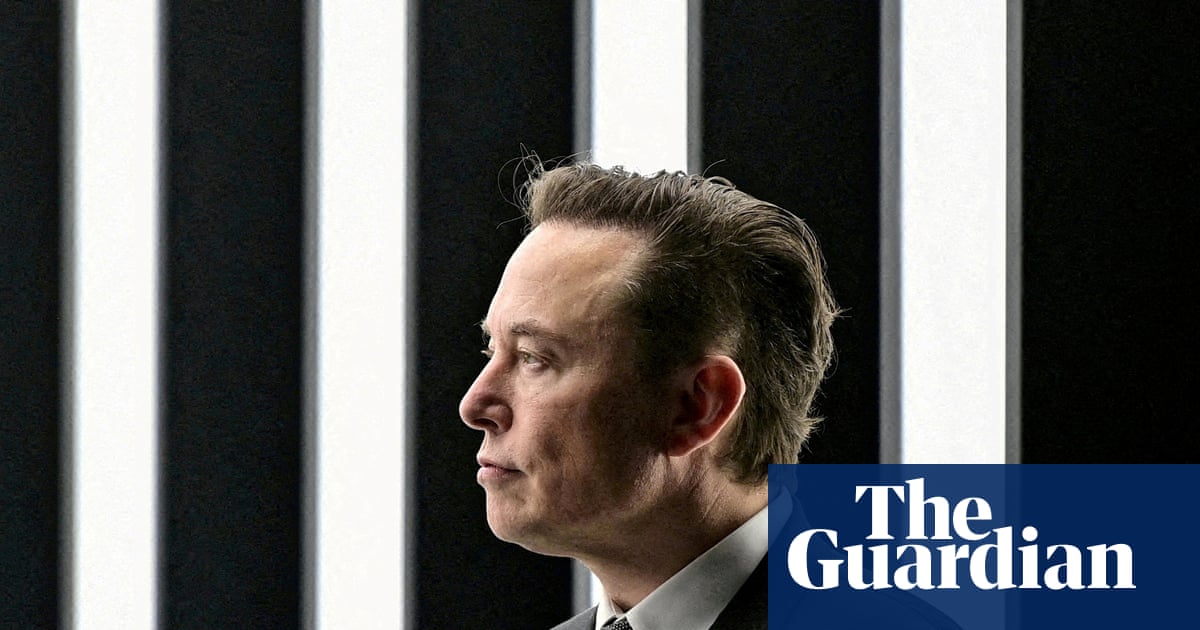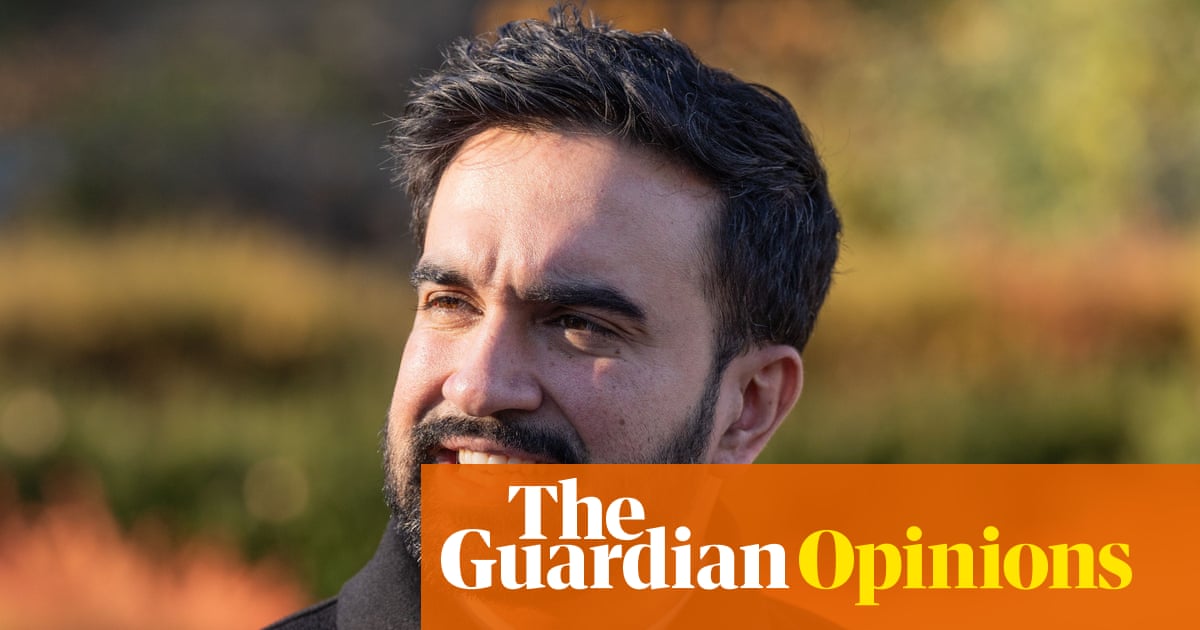Two days before the New York mayoral election, Michael Lange made a big electoral prediction – not just of who would win overall, or in each borough or neighborhood, but block by block. Lange, a political analyst born and raised in New York City, has spent over a decade in progressive politics and has become something of a local celebrity this year for his deep dives into city data and polling.
He published his highly detailed prediction map – which correctly forecast that Zohran Mamdani would win although failed to predict Andrew Cuomo’s strong performance – on his Substack, the Narrative War. Lange has a flair for witty coinages. He highlighted, for instance, the divide between the “commie corridor”, stretching from Park Slope to Bushwick to Astoria, where he predicted (accurately) that Mamdani would win by huge margins, and the “capitalist corridor” on Manhattan’s Upper East and Upper West Sides. There, “the Free Press and Wall Street Journal outrank the New York Times” in readership and most voters leaned toward Cuomo, who ran as a conservative-courting independent.
I spoke with Lange on Wednesday morning to discuss the trends and surprises that emerged on election night.
You’ve had a very busy election season. I could see you on Hell Gate’s election live stream last night, with your laptop strapped to you like a busking DJ in Washington Square Park. How was your night?
I had to do that because they were dropping around 200,000 ballots into the system every few minutes! I was actually a little nervous at the beginning: Mamdani led the early vote by 12 points, but there were two big batches of ballots that came in after that and his lead went from 12 to 8%. I was worried.
You know, there was a world in which yesterday went kind of poorly for Mamdani, where Cuomo was going to end up basically doubling his votes from the Democratic primary. But Mamdani added 500,000 votes to his primary coalition, and that’s a huge reason why he won. He went out and massively expanded his base from the primary.
Where did Mamdani get those extra votes from?
He built the coalition that the left always wanted to build: it’s multiracial, it’s young, it’s renters and it’s people squeezed by affordability. He improved considerably with Black and Hispanic voters, working- and middle-class voters, compared to the primary. Plus he further maximized his base of liberal progressives, young leftists, and Muslims and south Asians. He couldn’t have won without making those significant inroads.
There were also some Trump/Mamdani voters – is that a big trend?
It’s definitely a real thing, confined to working-class Latinos, south Asians and Muslims. Voters in immigrant strongholds that went for Trump last year went for Zohran this year. But I wouldn’t say he was winning over white working-class voters and Maga voters.
One of the big stories of the night was the sky-high turnout. Who did that help?
Both sides. Turnout was significantly higher than I had expected. I thought we might go over 2 million, but it’s closer to 2.3 million – that is a lot of darn voters. There was a decent anti-Mamdani block, who were motivated, but the Mamdani base was also motivated, and that was enough to win.
You predicted he’d get over 50% of the vote. Is he on course for that?
Right now you would say he’s favored to get over 50%. He’s at 50.4% but there’s still, like, probably 200,000 votes left to report [as of Wednesday morning]. So I don’t think it’s definitive, but I think it’s likely, and I hope he does because then no one can say Sliwa was a spoiler.
Curtis Sliwa, the Republican candidate, is the other big story of the night. His vote completely collapsed.
He didn’t win a single precinct in any borough. Not even Tottenville in Staten Island, which is like an 88% Trump neighborhood. That really surprised me. Cuomo kept very white areas, very wealthy areas and very religiously Jewish areas, and then added all of these Republicans on Staten Island who had a strong turnout. I think there was a lot of tactical voting by the Republicans. They were doing it before Trump tweeted his support for Cuomo, but that definitely helped. It could have even turned the tide if Mamdani’s coalition hadn’t grown.

What about your much mentioned “commie corridor” – was support for Mamdani overwhelming in those parts of Brooklyn and Queens?
I think there was a little dilution of the commie corridor in some areas like Astoria or Greenpoint that have more older white ethnic folks. In Astoria, for example, the Greek landlords and homeowners all went for Cuomo. So there was a little resistance. But no, mostly the commie corridor is another huge reason why Zohran won – he was polling between 77% and 83% in Fort Greene, Clinton Hill and Bushwick.
In the lead-up to the election we reported on whether Mamdani was making inroads with Jewish New Yorkers. Is there any suggestion that he did?
There are neighborhoods with a lot of secular and more progressive-leaning Jews – like Park Slope and Morningside Heights – where he did well. But in the wealthy Jewish communities like the Upper East Side, his position on Israel definitely mattered there. Similarly in the more middle-class Jewish areas like Forest Hills, Rego Park, or Spuyten Duyvil and Riverdale in the Bronx – they all leaned Cuomo. And also, you have Jewish immigrants from the former Soviet Union in southern Brooklyn, they were pretty staunchly Cuomo. So I don’t know if there were crazy narrative-busters on this one, but Mamdani did hold more progressive Jewish neighborhoods and even parts of the Upper West Side [which has more reform and conservative Jews] by big margins.
Has Mamdani rewritten what New York means politically? Will the commie corridor become a launch pad for leftwing candidates?
Yes, it’s no coincidence that some of the biggest political leaders from the left come from a handful of neighborhoods in Brooklyn, Queens and the Bronx. I’m sure that we’ll see more of that – people will come from these neighborhoods to be elevated nationally.
But I think that every city in America can have their own commie corridor. Urban places are the epicenters of leftwing power in America – because they’re young, people rent and they are places where people are crushed by the inequalities we face.

 German (DE)
German (DE)  English (US)
English (US)  Spanish (ES)
Spanish (ES)  French (FR)
French (FR)  Hindi (IN)
Hindi (IN)  Italian (IT)
Italian (IT)  Russian (RU)
Russian (RU)  3 weeks ago
3 weeks ago
























Comments